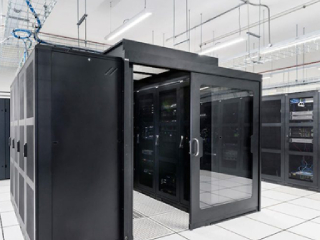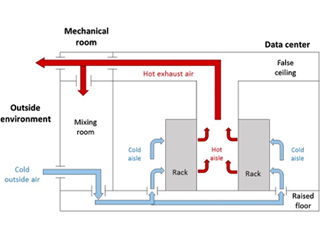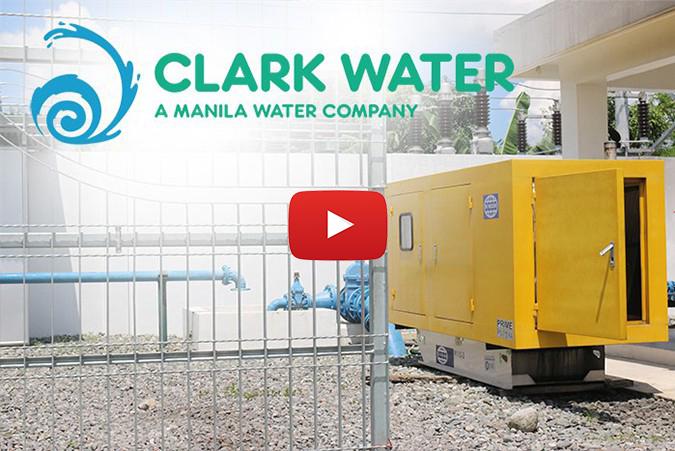The data center industry has created significant innovations in its infrastructures and technology-sharing operations over the years. Buildings meet standards of the local government regulations. This ensures that the structures are safe for the people to work in while also being able to function as a temporary shelter in case of catastrophes. With climate change intensifying, one challenge will be to keep the data centers working.
Datacenter operators must be prepared for any eventualities, especially in the midst of climate change. They shouldn’t be complacent when it comes to Mother Nature. No one can predict when changes in nature will hurl towards any company. It is imperative that companies should anticipate worst-case scenarios and find ways to mitigate them.
It took some convincing from governments and climate advocates to make changes in energy requirements and to create more earth-friendly measures in preserving data. Measures such as renewable energy procurement models can clearly produce financial benefits. In view of that, some data center industry insiders believe it’s imperative to plan on how to make new and existing facilities better able to cope with future extreme weather events — such as worsening hurricanes and floods. Those are events that keep data center operators constantly on high alert, as higher global temperatures are the new normal.
Data centers are built and located to withstand any natural calamities nature might throw at them before climate change happened. Now, everything has to be revised to cope with whatever temperature extremes climate change will produce. Recent weather extremes have led some government agencies to examine how exposed data centers are to extreme climates, such as high winds and lightning.
Experts argued that hardening facilities against extreme weather and temperatures were not the only things to worry about. Operators also need to develop protocols for data center workers, for their safety and to better manage extreme weather events.
More Extreme Weather Could Mean Designing Differently
Datacenter operators should plan and design entirely different power and cooling systems to adjust to the long-term consequences of climate change. Operators are not only planning for increased heat and humidity, they are also trying to develop alternative sources of power, such as solar and wind generation, for their servers.
Facilities that rely on cooling equipment require a large reservoir of water – such as evaporative adiabatic systems – which will be a liability in the future, as water scarcity becomes a reality in some regions.
Another challenge arises when redesigning data centers to move toward hybrid IT occurs where companies use a combination of on-premises data centers, collocation, and cloud storage, could actually increase the likelihood of an outage, rather than spreading the risk.
Climate extremes can damage data centers even more intensely than power system failures.
Here are some of the concerns of data centers that could affect their operations:
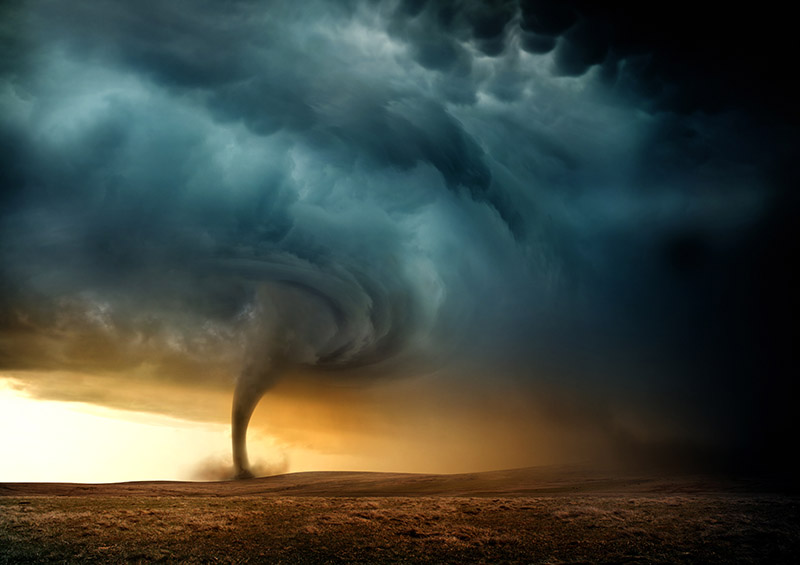
Heat Waves
Heatwaves are the primary concern of the data centers. Internet servers are prone to overheating. They cannot operate at high temperatures, and more importantly, they shut down when the temperature is too high. Data centers must have cooling systems that keep average ambient temperatures under control, while also eliminating high temperatures.
Snow and Ice Storms
Datacenter facilities can be located in areas that have experienced both snow and ice storms with sub-freezing temperatures. There can be times when locations experience winter extremes that can affect operations. These facilities must have plans to maintain the proper operating temperature for the servers, and a way to get the staff to their worksites, in case of severe snowstorms.
Tornadoes
Tornadoes can damage infrastructures and cost lives. Data centers should be located in areas that have never experienced intense tornadoes.
Hurricanes
A major hurricane or typhoon can cause both direct and indirect damage to infrastructures. Hurricanes and typhoons are tropical events that occasionally migrate outside the tropics. Buildings can be affected by the high winds as well as flooding and power outages
Facilities should be located in areas without significant hurricane risk.
Flooding
Flooding near data centers can be as disastrous as hurricanes or severe thunderstorms. Flood waters could seep into the structures where the servers are located, thus damaging them. Flooding could come from snowmelt, severe storms, or even ruptured pipes. The best advice is to erect flood control barriers for any eventuality.
Here are the five reasons Data Centers should to plan for Climate Change
Alternative Energy Demands
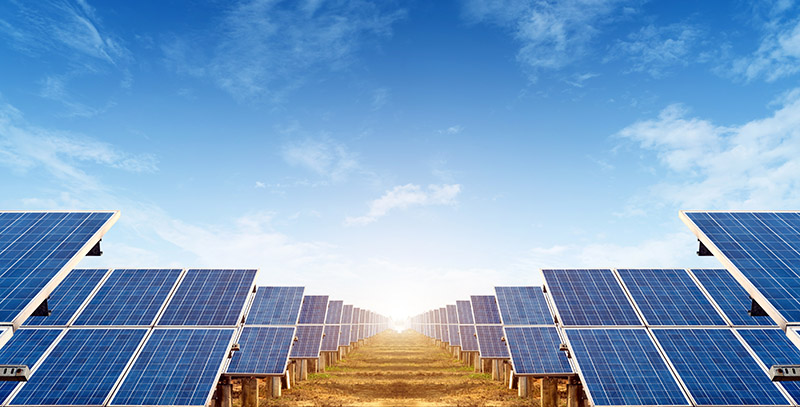
More and more companies are switching to more sustainable energy practices to reduce their carbon footprint and promote sustainability. They are persuading their suppliers and vendors to do the same. Some pressure is coming from consumers, who are increasingly treating environmental consciousness as a key persuasion point in crowded, competitive markets. Companies that embrace sustainability are being rewarded for their efforts, posting better growth rates than their more stubborn competitors.
Data centers that are massive consumers of energy are easy targets for environmental advocates. Private, on-site data center solutions are well known for their inefficiency in terms of power consumption and cooling. They do not have the proper infrastructure required to maximize performance effectively, and they’re usually housed in buildings that weren’t designed with energy efficiency in mind.
They should focus on collocation facilities that offer state-of-the-art infrastructure that allows the same workloads to run with far less energy. The facilities are using sustainable energy by using Power Purchase Agreements (PPAs) and Renewable Energy Credits (RECs) to promote investments in alternative energy sources. Major companies such as Apple and Google are integrating their hyperscale facilities to promote the development of more green data. As climate change becomes a reality for everyone, facilities that don’t invest in alternative energy will find it difficult to compete.
More Repetitive Natural Disasters
It was long believed that increases in global temperatures would result in more severe large-scale weather events. Scientists are now pinpointing individual disasters that they attribute to climate change. According to some of the latest research, up to 60 percent of locations across North America, Europe, East Asia, and southern South America will experience three times as many extreme events in the coming years.
This could severely impact the data centers. Severe and frequent disasters mean a greater chance of power disruption, data loss, and physical damage to equipment. Any of these events could ruin a business. Contingency measures for natural disasters are always a must for any facility, but the likelihood that these disasters will become more intense in the coming years makes it more important for data centers to make comprehensive data center disaster recovery plans. Those plans should begin with good redundancies that allow data centers to operate on backup power, without suffering server downtime, as well as having regular maintenance schedules to keep those systems in peak operating condition.
The need for AI efficiencies
Companies are now using AI and machine learning tools to analyze and implement power changes to optimize their operations. These AI programs introduce a range of energy-saving measures, while also helping companies to manage the human impacts of climate change more effectively.
How climate change will affect logistics and supply chains
Green data centers will have a major role in empowering the next generation of AI and machine learning. Whether hyper-scale facilities are servicing scalable cloud computing power to power advanced analytics, or simply fulfilling data storage needs for companies using Internet of Things (IoT) devices in gathering actionable data from their networks, data centers need to prepare for future AI demands.
New Location Strategies
As climate change causes disruptions in weather patterns around the world, companies need to revise their data center location strategies. Most companies are still using outdated information on risk-prone flooded areas. In March of 2019, for example, the Federal Emergency Management Agency (FEMA) made some new proposed flood maps along the western coast of Florida, the first update in 30 years. Companies that were once safe from flooding, are now discovering that their data backup solution was not as safe as they once thought.
With climate change a reality, a good data center location strategy needs to have long-term planning. As data center companies look forward to building new facilities, they need to find ways to adjust their location strategy to take changing climate conditions into consideration, in order to provide better security and peace of mind for their customers.
Cooling Needs
Data center cooling technology requires a huge reservoir of water to cool their data servers. Most of them rely on traditional HVAC cooling systems, but innovations in infrastructure management and AI, have helped in utilizing less power and effectively reducing energy costs. Other technologies, such as different forms of liquid coolants, could also help green data centers increase their computing power without experiencing energy spikes.

Hot temperature climates could mean relocating companies to more sustainable data centers or co-locating with structures in cooler climates. These data centers can utilize cooling systems that take advantage of the outside air to keep cooling costs down.
Since hot climates are predicted to grow even hotter in the coming years, studying growth opportunities in colder regions could be paired with advancements in cooling technology to achieve even better energy efficiency.

Conclusions:
While companies should take measures to help ensure data center safety in the foreseeable future, hardening the infrastructure is not enough; Mother Nature will always show that companies must never be complacent.
While data centers now may be unaffected by climate change, in the long run, there will always be a reason why climate change will affect them directly, in terms of their operations and how they provide services to customers. Organizations that fail to take climate change into consideration could find themselves at a competitive disadvantage in the future.
These are situations data centers throughout the world should consider, as storms and other natural disasters are increasingly frequent and severe. Managers must revise their data center’s resiliency and disaster recovery plans to cope with the effects of climate change. A mission-critical industry unprepared for climate change, courts disaster. Contingency measures should be conducted regularly and plans updated; the climate is only going to get worse before it gets better.
Climate change is already forcing changes in how companies formulate their data center strategies as extreme weather events become more frequent. As the demand for sustainable alternative energy increases, they must factor in how their data center plans cope with these changes. Partnering with a flexible co-location facility, with the capability needed to drive energy efficiency and provide viable backup solutions, is the best way to help organizations solve their sustainability concerns. The disaster recovery procedures need to be more effective as they move into a possible disruptive future.
Reference links:
https://my.esecuredata.com/index.php?/knowledgebase/article/114/weather-climate-and-data-centers
https://www.datacenterknowledge.com/uptime/climate-changes-so-should-data-center-operations
https://journal.uptimeinstitute.com/data-centers-and-climate-change/
https://www.vxchnge.com/blog/data-center-climate-change-plan

